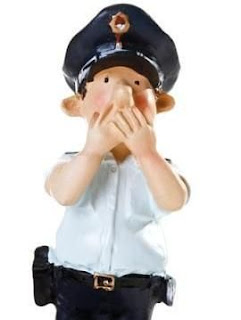Blue Code of Silence

Blue Code of Silence READ ABOUT: Little Rock's Newest Corrupt Police Chief Kenton Buckner The examples and perspective in this article deal primarily with the United States and do not represent a worldwide view of the subject. The Blue Code of Silence (also known as the Blue Shield, Blue Wall, Curtain, Vei l, or Cocoon) is an unwritten rule among police officers in the United States not to report on another colleague's errors, misconducts, or crimes. If questioned about an incident of misconduct involving another officer (e.g. during the course of an official inquiry), while following the code, the officer being questioned would claim ignorance of another officer's wrongdoing. The code is considered to be police corruption and misconduct. Any officers who engaged in discriminatory arrests, physical or verbal harassment, and selective enforcement of the law are considered to be corrupt. Many officers who follow the code may participate in some of